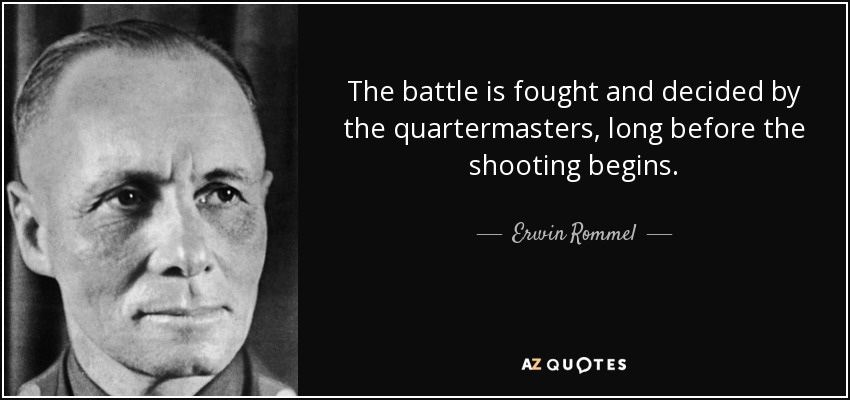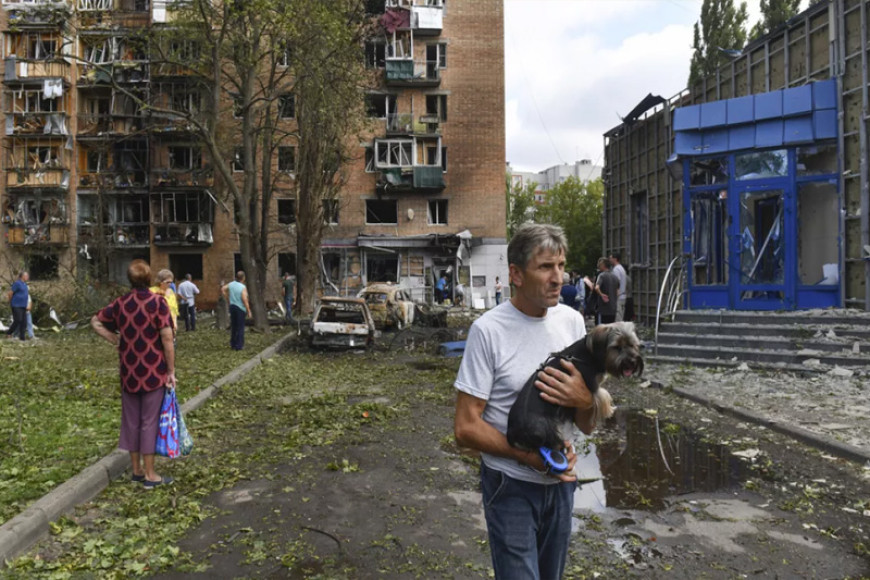“The battle is fought and decided by the quartermasters before the shooting begins.
By. Erwin Rommel”

The August 2024 incursion into Kursk Oblast by Ukrainian forces marks a pivotal moment in the ongoing Russo-Ukrainian War, reflecting a strategic shift in Ukraine's military operations. This report provides a comprehensive analysis of the incursion, examining its background, key events, strategic implications, and potential future scenarios.
Background
The Russo-Ukrainian War, which began in 2014 and escalated dramatically in 2022, has seen a series of military confrontations primarily within Ukrainian territory. However, the August 2024 Kursk incursion represents a significant departure from previous engagements, as it involves regular Ukrainian military forces launching a coordinated attack into Russian territory.
Historical Context
1. Previous Incursions:
Prior to the Kursk incursion, Ukraine had conducted smaller-scale raids and operations involving paramilitary groups and volunteer battalions. These operations typically aimed to disrupt Russian supply lines or target military installations near the border but did not involve large-scale territorial advances.
2. Military Preparedness:
By mid-2024, Ukraine had received substantial military aid from Western nations, including advanced weaponry, intelligence support, and training. This assistance has significantly enhanced Ukraine's operational capabilities, allowing for more ambitious military strategies.
3. Russian Vulnerabilities:
The ongoing conflict has exposed vulnerabilities within the Russian military, including logistical challenges, troop morale issues, and the impact of sanctions on military supplies. These factors have contributed to a perception of an opportunity for Ukraine to exploit Russian weaknesses through direct military action.
Key Events of the Incursion
Phase 1: Initial Assault (August 6)
On August 6, 2024, Ukrainian forces launched a well-coordinated assault into Kursk Oblast. The operation involved:
- Troop Movements:
Approximately 1,000 Ukrainian soldiers, supported by armored units, crossed the border at multiple points, focusing on the Sudzhansky District. This area was strategically chosen due to its proximity to key infrastructure and relatively limited Russian defenses.
- Targeted Objectives:
Ukrainian forces aimed to capture strategic locations, including towns and transportation routes, to establish a foothold within Russian territory. The initial assault was marked by heavy artillery bombardments and air support, which aimed to neutralize Russian defensive positions.
Phase 2: Advancements and Clashes (August 7)
Following the initial assault, Ukrainian forces made rapid advancements:
- Captured Settlements:
Reports indicated that Ukrainian troops had successfully captured several villages, including Korenevo and parts of Sudzha. These victories allowed Ukraine to establish control over key supply routes and communications.
- Engagements with Russian Forces:
Intense fighting ensued as Russian troops attempted to repel the advancing Ukrainian forces. The clashes involved both conventional infantry and mechanized units, with reports of significant casualties on both sides.
- Use of Technology:
The incursion showcased the effective use of modern warfare technology by Ukrainian forces, including drones for reconnaissance and targeting, as well as advanced artillery systems provided by Western allies.
Phase 3: Russian Response (August 8-9)
In response to the incursion, the Russian government took immediate action:
- Military Reinforcements:
Russia mobilized additional troops and military equipment to the Kursk region. This included deploying elite units and heavy artillery to counter the Ukrainian advances.
- State of Emergency:
The Russian government declared a state of emergency in Kursk Oblast, leading to the evacuation of civilians from frontline areas. This move aimed to mitigate civilian casualties and maintain public order amid the chaos.
- Propaganda and Information Warfare:
The Kremlin launched a propaganda campaign to frame the incursion as a terrorist attack, attempting to rally public support and justify its military response. State-controlled media emphasized the threat posed by Ukrainian forces, portraying them as aggressors.
Casualties and Humanitarian Impact
The Kursk incursion resulted in significant casualties and humanitarian concerns:
- Military Casualties:
Estimates suggest that Russian forces suffered around 945 military casualties, including killed and wounded personnel. Ukrainian forces also faced losses, although precise figures remain difficult to ascertain due to the fog of war.
- Civilian Impact:
The fighting led to civilian casualties, with reports of injuries and fatalities among the local population. The evacuation of civilians from affected areas highlighted the humanitarian crisis resulting from the conflict.
- Displacement and Refugees:
Thousands of residents were displaced from their homes, exacerbating the already dire humanitarian situation in the region. The Russian government faced criticism for its handling of the crisis and the impact on civilian lives.
Strategic Implications
The Kursk incursion has profound strategic implications for both Ukraine and Russia:
For Ukraine
1. Demonstration of Capability:
The successful incursion serves as a demonstration of Ukraine's military capabilities and strategic planning. It showcases the effectiveness of Western military aid and the ability to conduct coordinated operations beyond its borders.
2. Boosting Morale:
The operation is likely to boost troop morale and public support within Ukraine. Demonstrating the ability to strike deep into Russian territory can galvanize national sentiment and reinforce the resolve to continue the fight.
3. Psychological Warfare:
The incursion acts as a psychological blow to Russia, challenging the narrative of Russian invulnerability and control over the conflict. It may also encourage other anti-Kremlin factions within Russia to consider similar actions.
For Russia
1. Military Response and Mobilization:
The incursion necessitates a reevaluation of Russian military strategy and resource allocation. The rapid mobilization of troops to Kursk indicates a recognition of the threat posed by Ukraine and the need to bolster defenses.
2. Domestic Pressure:
The incursion may lead to increased domestic pressure on the Russian government. Public dissatisfaction with the war could grow, particularly if casualties continue to mount and the situation deteriorates.
3. Escalation of Hostilities:
Russia may respond with increased military operations, including aerial bombardments and artillery strikes against Ukrainian positions. This could lead to a cycle of escalation, further intensifying the conflict.
Future Scenarios
The situation following the Kursk incursion presents several potential future scenarios:
1. Escalation of Conflict:
The most immediate scenario involves an escalation of hostilities, with Russia launching retaliatory strikes against Ukrainian positions. This could lead to a broader conflict, drawing in more resources and potentially involving other nations.
2. Stalemate and Attrition:
Another possibility is a prolonged stalemate, where both sides dig in and engage in attrition warfare. This scenario would likely result in continued casualties and destruction, with neither side achieving a decisive victory.
3. Diplomatic Efforts:
In the wake of heightened tensions, there may be renewed diplomatic efforts to de-escalate the situation. However, given the current hostilities, such efforts may face significant challenges.
4. Impact on Civilian Populations:
Continued fighting in the region could lead to further civilian casualties and displacement, exacerbating the humanitarian crisis. The Russian government may face increased pressure to protect its citizens, potentially leading to more aggressive military actions.
5. International Involvement:
The incursion may prompt a reevaluation of international support for Ukraine. Western nations could increase military aid, including advanced weaponry, in response to the perceived threat from Russia.
Conclusion
The August 2024 Kursk Oblast incursion represents a significant escalation in the Russo-Ukrainian War, highlighting Ukraine's military capabilities and willingness to operate beyond its borders. The immediate consequences include increased military mobilization by Russia and heightened tensions in the region. As the situation evolves, the potential for further escalation or diplomatic resolution remains uncertain, with significant implications for both nations and the broader geopolitical landscape.
The Kursk incursion not only challenges the status quo of the conflict but also raises critical questions about the future trajectory of the war, the resilience of both nations, and the role of international actors in shaping the outcome. As both sides prepare for the next phase of the conflict, the world watches closely, aware that the events in Kursk could redefine the dynamics of the Russo-Ukrainian War.



